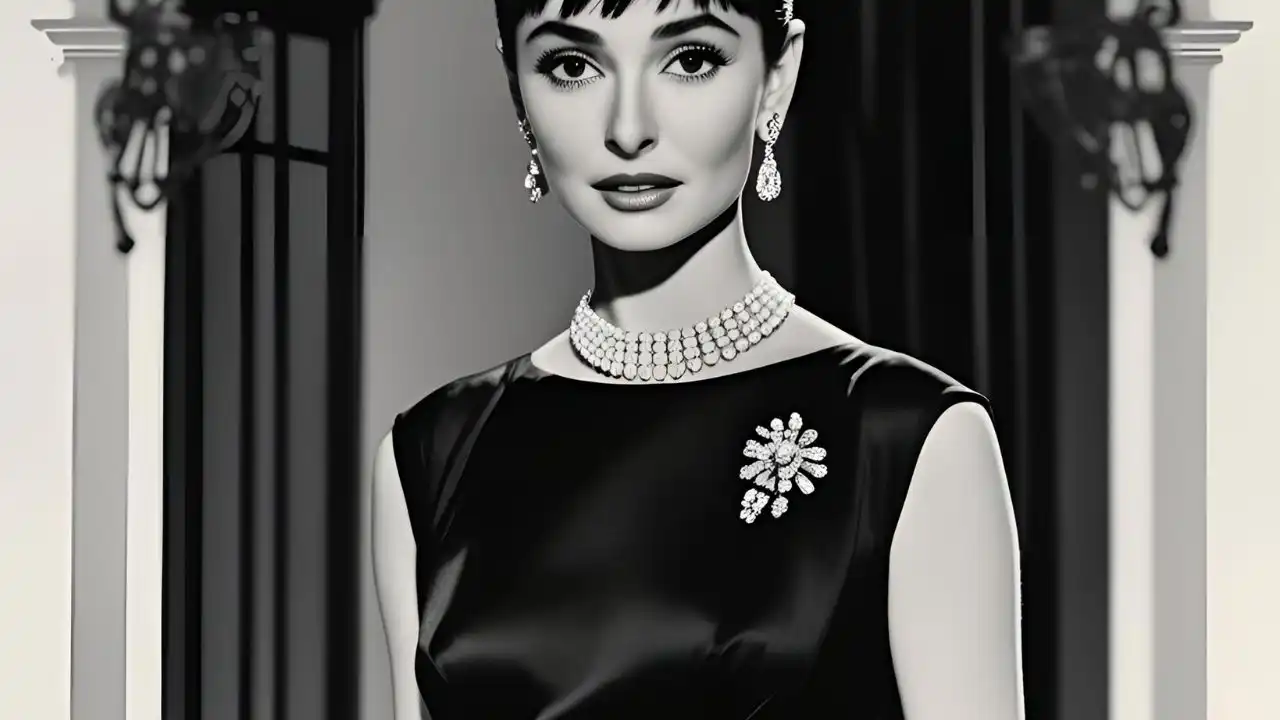The little black dress worn by Audrey Hepburn in Breakfast at Tiffany’s has become more than just an outfit—it’s a legendary fashion moment. As one of the most iconic garments in cinematic history, this dress continues to inspire designers, stylists, and fashion lovers around the world.
In this article, we explore the origins, legacy, design intricacies, and cultural impact of the iconic Audrey Hepburn little black dress, and how it still reigns supreme in modern fashion.
Contents
- The Birth of a Style Legend: Audrey Hepburn and Givenchy
- Design Elements That Define the Dress
- Cultural Impact: Reinventing the Little Black Dress
- Hollywood and Haute Couture: A Lasting Relationship
- Modern Interpretations and Homages
- Why Audrey Hepburn’s Little Black Dress Still Matters Today
- Preserving the Legacy
- Conclusion: The Dress That Defined an Era
The Birth of a Style Legend: Audrey Hepburn and Givenchy
In 1961, the world was introduced to Breakfast at Tiffany’s, a film adaptation of Truman Capote’s novella. The character Holly Golightly, played with effortless grace by Audrey Hepburn, made her first appearance on screen wearing what would become the most famous little black dress of all time.
Designed by Hubert de Givenchy, the sleeveless, floor-length black gown was made of Italian satin. Its elegant silhouette, with a fitted bodice and slightly flared hem, was crafted to reflect refined minimalism, perfectly suited for Hepburn’s slender figure and graceful aura.
The pairing of oversized black sunglasses, a multi-strand pearl necklace, and opera gloves transformed a simple black gown into a symbol of timeless chic.
Design Elements That Define the Dress
What makes Audrey Hepburn’s little black dress so enduringly powerful is not just the occasion or the wearer, but the subtle sophistication of the design itself. Let’s break down its most notable features:
- Silhouette: The dress followed Hepburn’s natural lines, with a narrow waist and slim skirt that slightly flared, allowing graceful movement.
- Fabric: Made of luxurious black satin, it delivered sheen under soft lighting while absorbing dramatic shadows under harsher tones.
- Neckline: A modest yet refined boat neckline added to the grace and composure of the garment.
- Accessories: The ensemble was perfected with pearls, black gloves, and a cigarette holder—each item carefully chosen to enhance the elegance of the dress rather than compete with it.
Every detail of the dress was engineered to amplify Audrey Hepburn’s natural elegance. Rather than upstage the woman wearing it, the dress elevated her charm and persona.
Cultural Impact: Reinventing the Little Black Dress
The concept of the little black dress was introduced by Coco Chanel in the 1920s, but it was Audrey Hepburn’s portrayal of Holly Golightly that propelled it into the fashion hall of fame. Following the release of Breakfast at Tiffany’s, the LBD became a must-have item in every woman’s wardrobe.
Since then, designers from Yves Saint Laurent to Alexander McQueen have reinterpreted the LBD. Yet, the archetype remains unchanged: elegant, understated, powerful. The original Givenchy design continues to serve as a blueprint for every new version of the classic garment.
Fashion historians agree that Audrey Hepburn’s LBD not only shaped film fashion but also transformed the perception of black clothing—from funereal and formal to fashion-forward and elegant.

Hollywood and Haute Couture: A Lasting Relationship
The relationship between Hollywood and high fashion is often discussed in modern pop culture, but it was Audrey Hepburn and Givenchy who set the standard for such collaborations. Unlike other celebrity-stylist relationships, Hepburn and Givenchy’s partnership was rooted in deep friendship and mutual creative respect.
Givenchy didn’t just design dresses for Hepburn; he created for her. This allowed their collaborations to become seamless extensions of Audrey’s identity, both on and off screen. The result? A fashion moment that transcended cinema and became an eternal symbol of style, class, and simplicity.
Modern Interpretations and Homages
More than six decades later, the Audrey Hepburn little black dress continues to be reinvented and reimagined:
- Red Carpet: Celebrities like Angelina Jolie, Natalie Portman, and Anne Hathaway have donned LBDs inspired by the original Hepburn look.
- Fashion Campaigns: Luxury brands such as Dior, Prada, and Chanel often reference the minimalist elegance of the Hepburn-Givenchy masterpiece.
- Halloween & Costume Parties: The LBD, pearls, and cigarette holder ensemble remain among the most popular costume choices.
- Pop Culture: From TV shows to music videos, countless tributes keep the spirit of Hepburn’s LBD alive and relevant.
What keeps this dress relevant is its adaptability. Whether worn with stilettos or sneakers, on a catwalk or city street, the essence of the look never fades.

Why Audrey Hepburn’s Little Black Dress Still Matters Today
Fashion trends come and go, but few outfits manage to hold the world’s attention for generations. The enduring appeal of Hepburn’s LBD lies in its versatility, grace, and symbolism. It speaks to the power of simplicity—how an outfit doesn’t need to be extravagant to be extraordinary.
Moreover, the dress represents a bridge between film and fashion, between elegance and accessibility. It invites women to feel confident, poised, and timeless without needing to follow fleeting trends. In a world of ever-evolving aesthetics, Audrey Hepburn’s LBD remains a beacon of effortless sophistication.
Preserving the Legacy
The original Givenchy gown worn by Audrey Hepburn was auctioned by Christie’s in 2006 for a staggering £467,200—one of the highest prices ever paid for a piece of film memorabilia. Today, the dress remains preserved as a masterpiece of both fashion and film history.
Museums, collectors, and fashion institutions all over the world continue to honor this dress, ensuring that new generations appreciate its cultural and artistic value.
Conclusion: The Dress That Defined an Era
Audrey Hepburn’s little black dress is more than just clothing—it’s a timeless philosophy. It teaches us that fashion doesn’t have to shout to be heard. It can whisper elegance, speak in silences, and still be remembered forever.
As designers continue to evolve the fashion landscape, the silhouette created by Givenchy and immortalized by Hepburn will always serve as the gold standard for understated glamour. It is not just fashion history; it is a living legacy.


